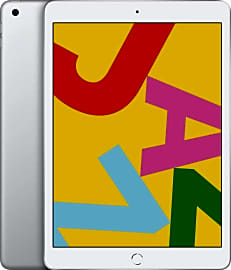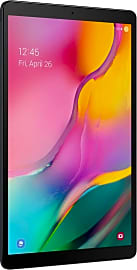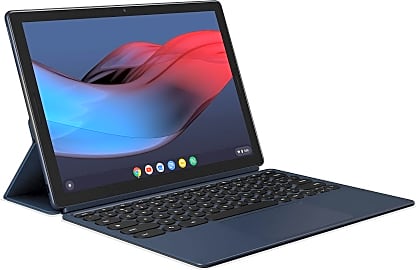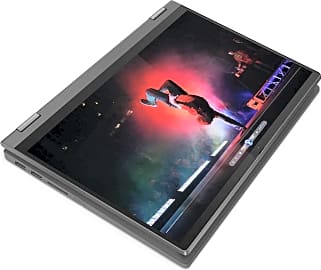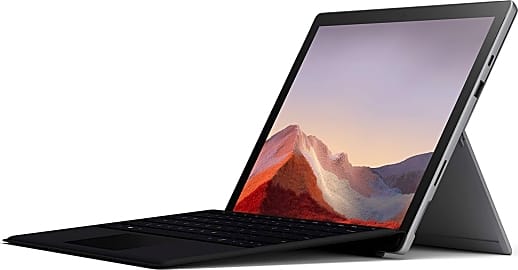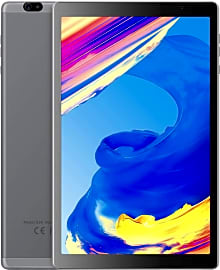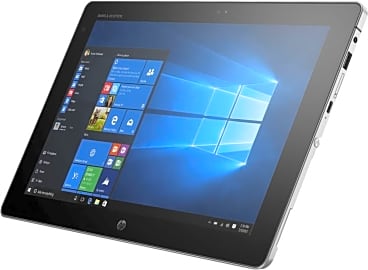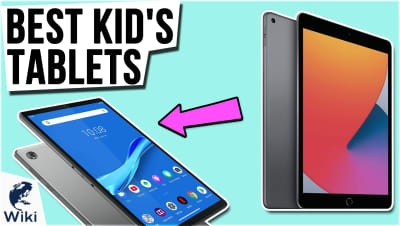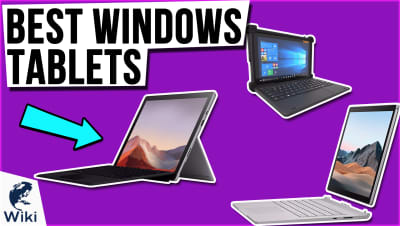The 10 Best Tablets For Students

This wiki has been updated 37 times since it was first published in April of 2016. Gone are the days of toting around heavy laptops with bulky batteries across campus just to take notes and do some research. Chosen with students in mind, these powerful tablets deliver virtually all of the same performance, versatility, functionality and overall entertainment value one might expect from a regular computer, but in much smaller, lighter, and more portable packages. When users buy our independently chosen editorial recommendations, we may earn commissions to help fund the Wiki.
Editor's Notes
July 24, 2020:
The tablet market is a little bit weird these days. In some ways, such as variety at the top end of the offerings, tablets have actually regressed slightly. For example, there are only a couple manufacturers delivering truly high-end tablets right now. The Apple iPad, of course, is one of the benchmarks for tablets worldwide, and has been for years. This particular model also has the distinction of not costing an arm and a leg, unlike some of their other releases. And while the Samsung Galaxy Tab S5e isn't the brand's newest option, it is the most affordable recent one to feature Dex technology that can make a student's life considerably easier.
The Samsung Galaxy Tab A is a worthwhile and reasonably priced option, and so is the lesser-known Vankyo MatrixPad S20. Neither of these is extremely powerful, but for general use they will work just fine.
After that, we move away from iOS and Android. The Google Pixel Slate is, in a way, the quintessential Chromebook, although the Lenovo Chromebook Duet gives it quite the run for its money, especially in terms of weight and form factor.
Speaking of form factor, the Microsoft Surface Pro 7 and Microsoft Surface Go are both supremely well-engineered devices, and which one you choose will depend on how much processing power you need and how much you want to spend, but either one would be a great choice. Alternatively, the HP Elite X2 is a clone of an older version of the Surface but is still quite capable and, at this point, significantly more affordable. The Lenovo Flex 5, on the other hand, is a 360-degree convertible rather than a detachable tablet, but we felt that it's worth mentioning because of its quality craftsmanship and impressive specifications.
May 28, 2019:
Tablets and education are a great match for various reasons. They're lightweight and easy to carry in a bag, their battery life is great, they're not obtrusive or distracting when used on a desk, and they're less likely to be loaded with distracting games and movies, simply because they don't have as much storage space or processing power. In that spirit of minimalism, the Fusion5 is one of the most interesting new releases; it's perfectly capable of accessing Android-based e-classroom platforms and textbooks, it's quite compact, and compared to most, it costs practically nothing. It's a great choice for anyone who's not comfortable carrying around a super-expensive piece of equipment, particularly younger students.
Speaking of younger students, more and more high schools are incorporating Chromebooks into their education plans, and the Acer R11 is one of the best low-cost models there is. The main problem with such convertibles is that they're heavier and bulkier than a traditional tablet. For something much lighter that does come with a keyboard, check out the Asus Transformer Mini. Of course, while that one is relatively powerful and pretty well-priced, for a bit more money you can grab the Microsoft Surface Go. No to be confused with the Surface Pro -- a full-fledged laptop that students and part-time professionals both love, despite its cost -- the Surface Go is really a super-compact laptop with a matching folio cover, though unfortunately, that cover is sold separately. But as useful as Android is, it's not nearly as versatile as Windows, and so far, there aren't any ARM-based tablets capable of running the resource-intensive operating system.
If you do want to go the true tablet route, Apple's products are especially well made, as usual -- they're also pretty expensive, which is why students may want to stick to the baseline iPad or the moderately priced Air. Anything by Samsung is guaranteed to provide almost a good of a user experience as the Cupertino gang, however, and Lenovo's offerings are not far behind.
A Brief History Of Tablet Computers
Science fiction writers were able to see the potential in such a machine, though, and authors like Isaac Asimov and Arthur C. Clarke featured tablets in their writings.
While the tablet computer might seem like a futuristic device, its roots go back further than you might expect — all the way back to just after the turn of the 20th century, in fact.
A device that was able to create text by analyzing handwriting motions was patented by Hyman Goldberg in 1915, and it was used primarily for copying and typesetting. Goldberg's invention didn't exactly set the world on fire, however, and no further tablet-like devices were created until 1956.
Science fiction writers were able to see the potential in such a machine, though, and authors like Isaac Asimov and Arthur C. Clarke featured tablets in their writings. The TV series Star Trek: the Next Generation also depicted the use of the technology, making tablets look impossibly advanced.
Steve Jobs was also an early proponent of tablets, saying in 1983 that he wanted a "computer in a book that you can carry around with you." He would later release the Apple Newton, which proved to be a costly failure, as its chief selling point was a handwriting analyzer that was completely unable to analyze handwriting.
Ever ready to claim one of Jobs's ideas for their own, Microsoft debuted their Microsoft Tablet PC. Designed for business use (and targeting the healthcare field specifically), the tablet was advertised as a note-taking and storage device. These machines failed to make much of a dent in the marketplace, mainly due to poor support from Microsoft.
Hand-held computers were mainly relegated to the business world, with Palm Pilots and Blackberries being the dominant names in the market, until Apple released the iPad in 2010. This new device revolutionized the industry, as consumer applications like media browsing and personal photography were given just as much attention as business uses. For the first time, the regular person could see the benefit of a tablet computer. The future had come at last.
Since the iPad hit the scene, many other companies have debuted competing devices, such as the Amazon Kindle Fire, the Samsung Galaxy, and the Microsoft Surface. While none of these have managed to dethrone the iPad quite yet, they have eaten into Apple's market share quite a bit.
Now that tablet computing is as commonplace as science fiction once promised us it would be, it remains to be seen what the next great technological leap forward will entail.
Benefits Of Tablets For Students
Laptops and hand-held computers have been commonplace on college campuses for years, but tablet technology has recently begun making its way into high schools as well. Even elementary students are being exposed to mobile technology in educational settings, and they're responding quite favorably.
Additionally, staying abreast of modern technology will help your child develop marketable skills down the road.
The most obvious benefit is the cost. Buying a tablet is a one-time purchase (plus any relevant data plans, but most families already have those). The information on the tablet is constantly updated and kept current, so your child will never waste time learning outdated facts. When I was in school, for example, I was forced to devote precious brain cells to learning about defunct countries like Czechoslovakia and East Germany.
Eliminating books also reduces the physical toll that lugging around all that knowledge in a backpack takes on young spines. With one lightweight device, you can have a world of knowledge at your fingertips — and better yet, you'll still have feeling in your fingertips.
Tablets allow for constant communication among students, teachers, and parents. There's no more concern about notes being lost or report cards being forgotten, as everyone can stay in the digital loop at all times. After all, keeping parents involved is one of the best ways to ensure kids succeed.
Additionally, staying abreast of modern technology will help your child develop marketable skills down the road. Not being computer-savvy is a tremendous detriment in today's society, so it's better to introduce them to the technology while they're still young, before they get left behind.
How To Pick The Best Tablet For You
Once you've made the decision to get a tablet for school, you're still left with the task of picking the right one, and there are a lot of options out there.
If you plan on watching movies or playing games on it, take that into account before you buy.
For college students, the most important question is your field of study. If you're going into a design major, for example, then you'll want something that excels at drawing and editing. Writers, on the other hand, will need an option that's easy to type on, while theater majors will need something they can sell for food after they graduate.
Choosing the correct size is also crucial. Younger students will likely benefit from larger tablets, as a bigger interface will be easier for them to use. Older pupils can handle a smaller option just fine, and will likely prefer something that doesn't take up a lot of space.
Of course, keep in mind that the device will inevitably be used for non-educational purposes, as well. If you plan on watching movies or playing games on it, take that into account before you buy. Likewise, if you think you'll mainly use it to read, some devices have displays geared towards that specific purpose.
Regardless of what you choose, you'll likely soon find that you can't live without your new toy. While tablets can revolutionize the educational experience, making learning more engaging and interactive, they'll never be able to replace textbooks in one important metric: drawing mustaches on historical figures for posterity.



